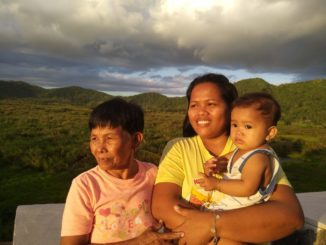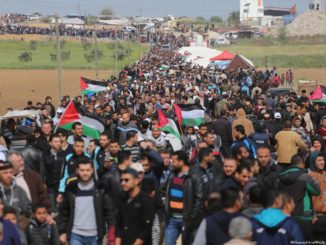
Algeria’s Joyful Revolution
The most striking feature of today’s uprising is that the gigantic rallies are peaceful and socially mixed, with men and women, old and young, taking part—and adamant in their resolve to get rid of the regime.

The most striking feature of today’s uprising is that the gigantic rallies are peaceful and socially mixed, with men and women, old and young, taking part—and adamant in their resolve to get rid of the regime.

Source: The Intercept
IT’S FRIDAY AT DUSK on a long stretch of dirt road in Hidalgo County, Texas, about a mile north of the Rio Grande and Mexico. Orange light gleams through a single palm tree towering over hardwood mesquites. Land speculators imported palms to the Rio Grande Valley a century ago to attract white American settlers to the region, and they loom especially high above dense thornscrub below.
I’m walking to my car with Christopher Basaldú, who’s lived in a nearby tent for over a month in anticipation of wall construction along the U.S.-Mexico border. Basaldú, of Brownsville, and about two dozen others formed the Yalui Village campsite on the site of the 19th century-era Eli Jackson Cemetery, a state-designated historical marker in the path of the proposed border barrier. A sign at the entrance of the camp announces the presence of the Carrizo/Comecrudo tribe (Estók G’na), a reference to groups indigenous to the valley. The occupation began in late January, shortly before Customs and Border Protection said wall construction could begin.

Eluminada Roca has lived all her life next to the Leyte Sab-a Basin peatlands. The grandmother from of San Isidro village in Philippines’ Leyte island grew up looking at the green hills that feed water to the peat land, she harvested tikog—a peatland grass to weave mats—and ate the delicious fish that was once in abundant in the waters. But today, the land is losing its water, the grass is disappearing and the fish stock has drastically decreased.

Palestinians participated in the Great March of Return because they understand their centrality in their struggle. Their protests are a collective statement, a cry for justice, an ultimate reclamation of their narrative as a people – still standing, still powerful and still hopeful after 70 years of Nakba, 50 years of military occupation and 12 years of unrelenting siege.
Copyright Toward Freedom 2019